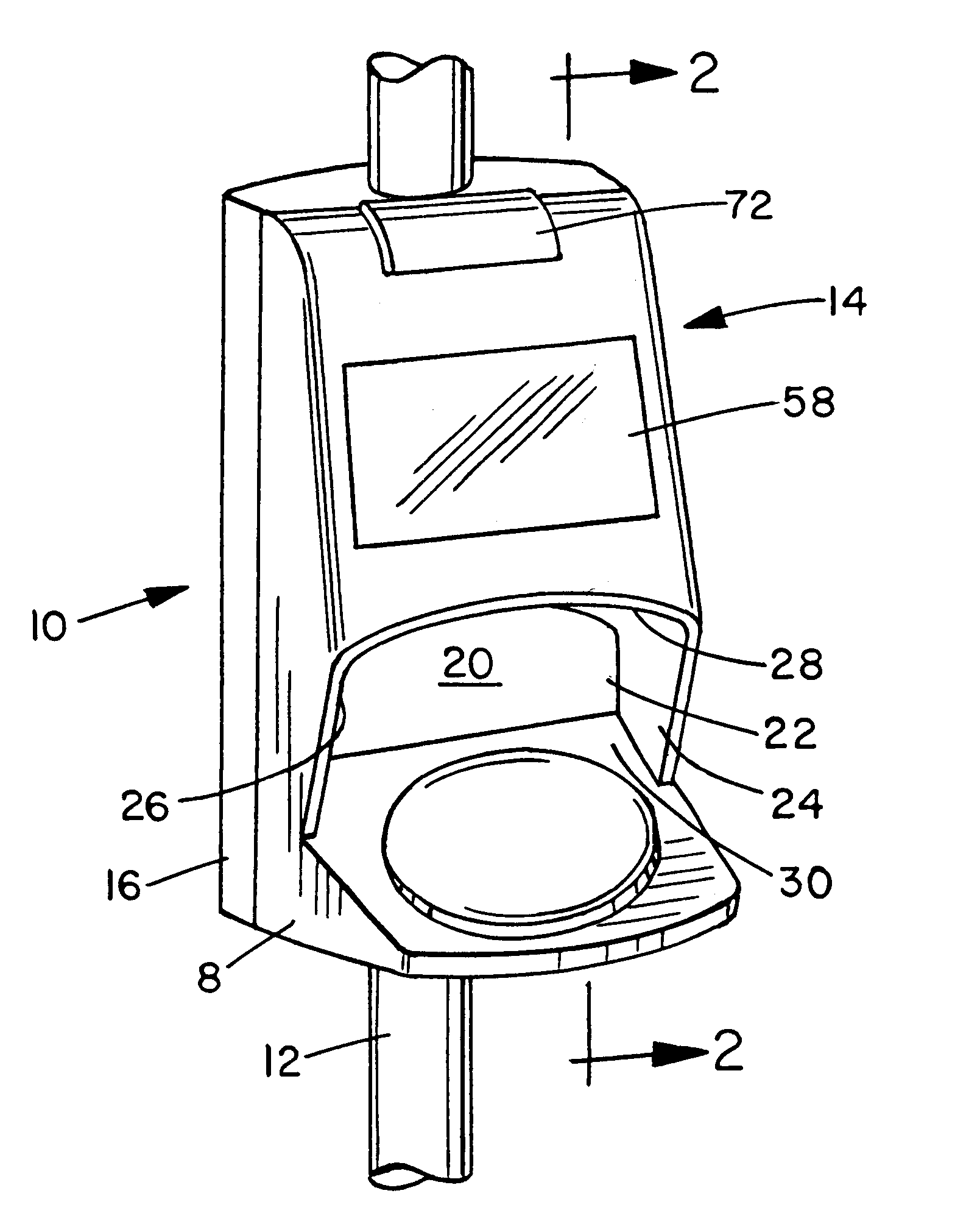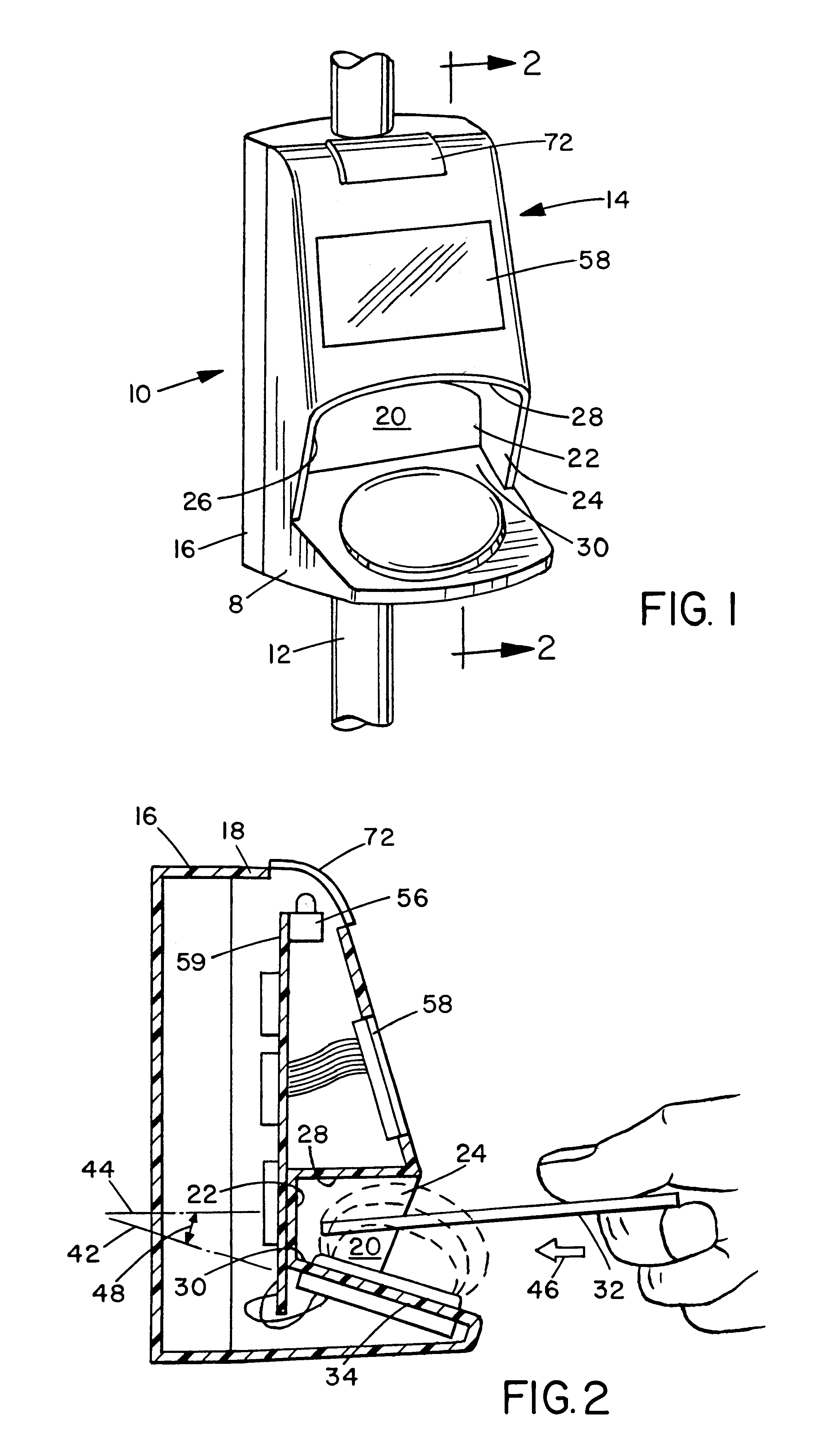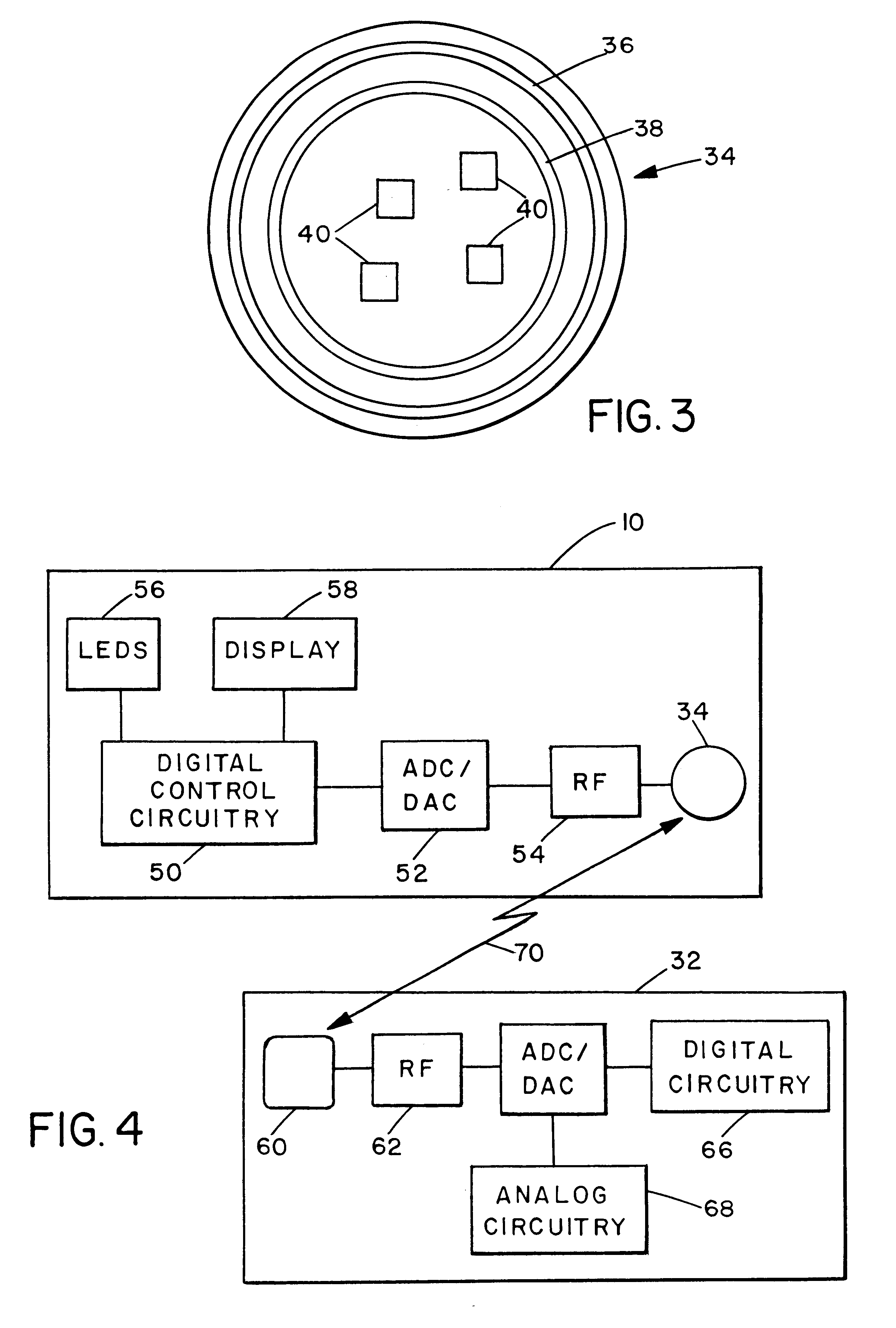Contactless card automatic check-in check-out device
a technology of automatic check-in check-out and contactless card, which is applied in the structural form of instruments, resonant antennas, radiating elements, etc., can solve the problems of unintended check-out, unintended check-out, and unintended check-out transactions of prior contactless cico validator devices
- Summary
- Abstract
- Description
- Claims
- Application Information
AI Technical Summary
Benefits of technology
Problems solved by technology
Method used
Image
Examples
Embodiment Construction
As illustrated in FIG. 1, a validation device 10 is mounted on a pole 12 in a mass-transit vehicle at a suitable height conveniently within the reach of a typical person, such as about four feet (122 cm) above the floor. Device 10 includes a housing 14 having two housing portions 16 and 18 that engage one another and capture pole 12 between them. Housing portion 18 has a cavity 20 formed in its exterior surface. Cavity 20 has a cave-like shape defined by a rear wall 22, two side walls 24 and 26, a top wall 28 and a bottom wall 30. Although such walls are preferred, in other embodiments cavity 20 may have any other suitable structure.
As illustrated in FIG. 2, the entrance to cavity 20 bounds a target area into which a user inserts a farecard 32 to initiate a check-in or check-out transaction. Device 10 also includes an antenna 34 that is mounted inside housing portion 18 adjacent bottom wall 30. Although other structures may be suitable, antenna 34 preferably has the structure illust...
PUM
 Login to View More
Login to View More Abstract
Description
Claims
Application Information
 Login to View More
Login to View More - R&D
- Intellectual Property
- Life Sciences
- Materials
- Tech Scout
- Unparalleled Data Quality
- Higher Quality Content
- 60% Fewer Hallucinations
Browse by: Latest US Patents, China's latest patents, Technical Efficacy Thesaurus, Application Domain, Technology Topic, Popular Technical Reports.
© 2025 PatSnap. All rights reserved.Legal|Privacy policy|Modern Slavery Act Transparency Statement|Sitemap|About US| Contact US: help@patsnap.com



